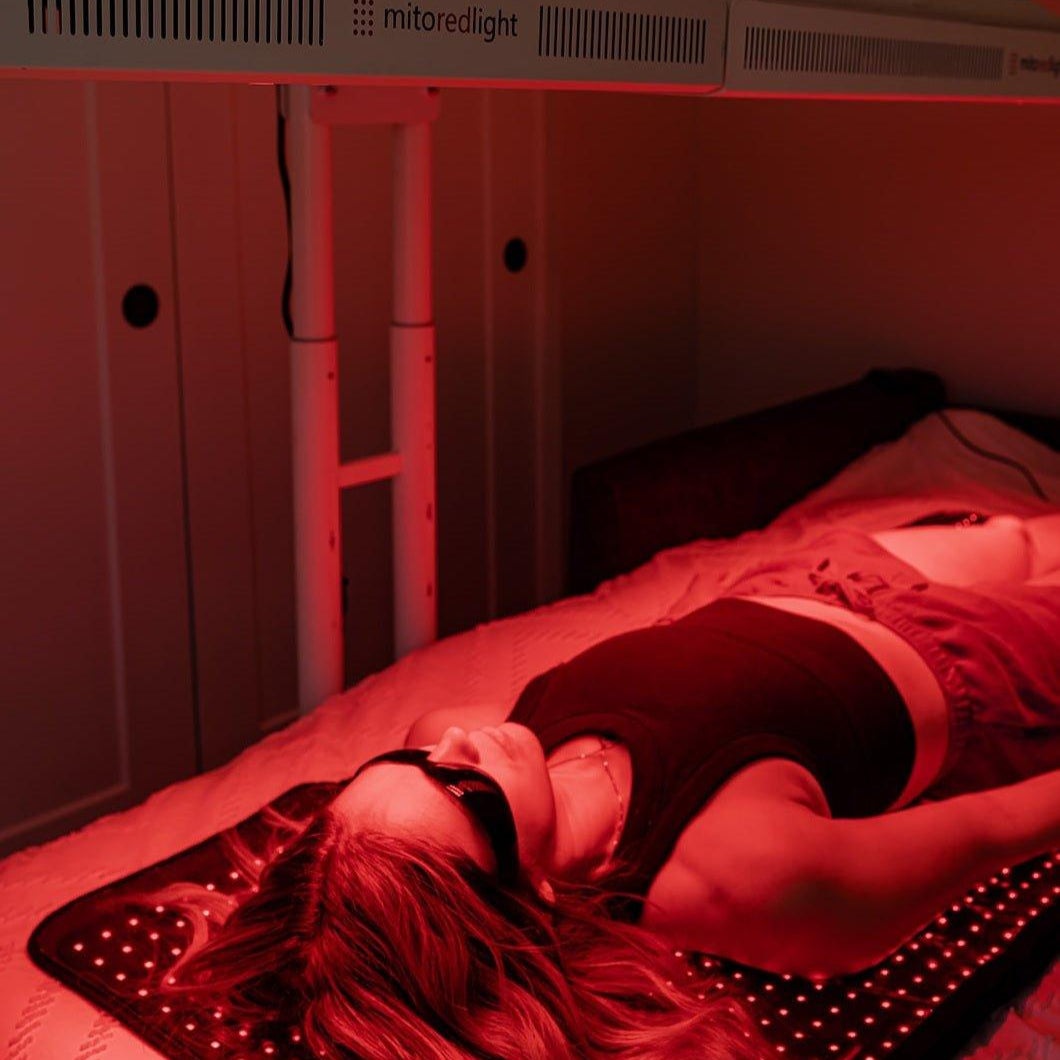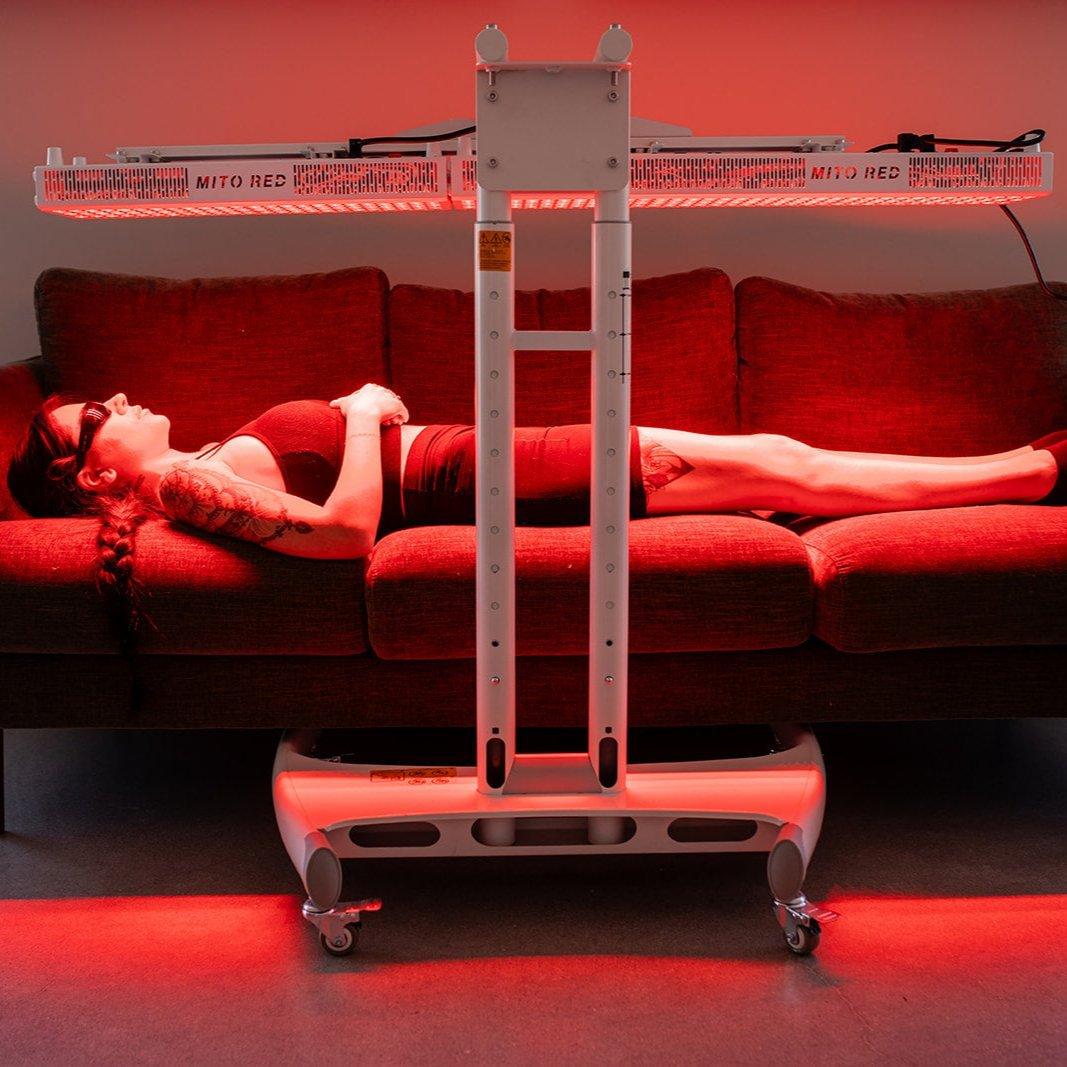DISCLAIMER: Mito Red Light devices are Class II wellness devices aimed at affecting the body through topical heating and supporting cellular function. The information provided in this article and on this site is for educational purposes only and is not intended to imply effectiveness of Mito Red Light devices for any specific application. The information provided in this article and on this site is not intended to diagnose, treat, cure, or prevent any disease, is not a substitute for consultation with a licensed medical provider and should not be construed as medical advice. Click here to read our article on potential contraindications of red light therapy..
Migraines can be debilitating, affecting millions worldwide. Traditional remedies often bring side effects, making sufferers yearn for natural alternatives. Recently, green light therapy has emerged as a promising solution. Let's delve into what makes this therapy a potential game-changer.

Understanding Green Light Therapy
Green light therapy involves exposure to specific wavelengths of green light to alleviate various health issues, including migraines. It's a non-invasive treatment that has captivated researchers for its potential benefits. Unlike traditional medications, which can have side effects or interact negatively with other drugs, green light therapy focuses on providing relief with less risk of adverse reactions. In fact, studies have begun to show positive effects of green light exposure on conditions beyond migraine, such as fibromyalgia and neuropathic pain, providing a happy hope for those seeking alternative treatments Shining a Green Light on a New Preventive Therapy for Migraine.
The concept of phototherapy isn't new, but the emphasis on a particular color—green—has emerged relatively recently. The calming effect of green light is thought to stem from its unique ability to produce less retinal and cortical stimulation compared to other colors, making it less likely to provoke discomfort in individuals who are sensitive to light. This soothing characteristic suggests that green light therapy might offer significant relief from the daunting symptoms that typically accompany migraine attacks. For those who endure chronic migraines, this breakthrough may represent an unprecedented shift in how pain management is perceived and delivered Migraine Therapy | Green Light Pain Relief.
Researchers emphasize the importance of using a specific, narrow band of green light rather than a general green bulb. This precise wavelength is key to unlocking the therapeutic potential of green light therapy. Notably, Dr. Mohab Ibrahim has been pivotal in spearheading research that highlights the promising nature of green light exposure as a preventive measure against migraines. His studies detail how carefully regulated green light can potentially contribute to reducing the number and intensity of headache days Green Light for Migraines: Does This Therapy Work?.
How Green Light Therapy Works for Migraine
Research suggests that green light therapy may reduce the frequency and severity of migraines. The therapy works by influencing the body's perception of pain and promoting relaxation. While the exact mechanism is still being studied, initial results are encouraging.
So, how does this work? In essence, exposure to green light affects the retina in a way that lessens migraine symptoms. The light's interaction with the brain is thought to modify neuronal activity, thereby reducing pain perception. Recent findings from the University of Arizona Health Sciences indicate a 60% reduction in pain intensity and the number of headache days among participants using green light therapy. This substantial improvement underscores the potential for nonpharmacological interventions in treating migraines, potentially doubling as a preventive measure Green Light Therapy Shown to Reduce Migraine Frequency, Intensity.
One compelling theory is that green light helps regulate the production of serotonin, a neurotransmitter that commonly fluctuates during migraine attacks. This regulation might create a more stable internal environment, reducing the propensity for severe migraine episodes to occur. Furthermore, reports suggest an associated enhancement in the quality of sleep—a crucial factor for overall well-being—thereby amplifying the positive outcomes of green light therapy on health. These insights lead to a burgeoning curiosity in the scientific community, fueling ongoing studies to better comprehend and harness the full spectrum of green light's benefits Green Light for Migraines.
Benefits of Green Light Therapy
Apart from potentially easing migraines, green light therapy is known for having minimal side effects. It's also considered safe and cost-effective, making it an appealing choice for those wary of traditional medication.
In contrast to medications that might cause drowsiness or other undesirable reactions, green light therapy presents an option with fewer risk factors. This noninvasive method aligns harmoniously with current wellness trends that favor natural, body-friendly alternatives. The appeal extends further, given that green light is inexpensive to implement and doesn't require an extensive array of equipment to use effectively. Dr. Ibrahim, for instance, highlights his team's success in providing a financially viable option for migraine sufferers, aligning with a growing preference for sustainable and accessible health solutions Shining a Green Light on a New Preventive Therapy for Migraine.
Another benefit is the therapy's ability to improve sleep quality, which is crucial for migraine sufferers often plagued by sleep disturbances. Participants in several studies have reported easier sleep initiation and maintenance following nighttime sessions with green light therapy. Moreover, patients experiencing chronic migraine have noted improved productivity in daily activities and an enhanced capacity to manage stress—no small feat given the toll that migraines can take on an individual's mental health Green Light Therapy Shown to Reduce Migraine Frequency, Intensity.
Scientific Research and Studies
Numerous studies have been conducted on green light therapy, with many showing promising results. For instance, a study conducted by Harvard Medical School revealed significant reduction in migraine days per month with consistent therapy.
In another pivotal research, Dr. Rami Burstein's team at Harvard identified green as the only bandwidth of light that alleviated rather than exacerbated migraine pain. Their investigation demonstrated green light's unique ability to induce a sense of comfort and diminish the severity of symptoms that participants experienced during migraine attacks. Crucially, this finding has established a foundation upon which ongoing studies continue to explore green light's broader applications beyond migraine relief, aiming to demystify the mechanisms underlying this phenomenon Migraine Therapy | Green Light Pain Relief.

The University of Arizona's studies corroborate many of Burstein's initial findings, adding further weight to the body of evidence supporting green light therapy. Their comprehensive clinical trials report not only a decrease in headache frequency and intensity but also transformative improvements in quality of life metrics among participants. Scientists, while intrigued by the beneficial outcomes, remain keen on unravelling precisely how green light operates at the molecular and neurochemical levels—a pursuit that holds promise for groundbreaking advancements in therapeutic strategies Green Light Therapy Shown to Reduce Migraine Frequency, Intensity.
Considerations Before Trying Green Light Therapy
Before opting for green light therapy, consult with a healthcare professional to understand its suitability for your specific condition. It's crucial to consider your individual health circumstances, any potential contraindications, and follow recommended guidelines.
While encouraging evidence supports the use of green light, it's essential to approach it with realistic expectations. As of now, research is ongoing, and efficacy can vary greatly from person to person. It's worth noting that green light therapy isn't a replacement for traditional treatments but rather a complementary option that might enhance overall treatment efficacy when integrated into an established regimen Green Light for Migraines: Does This Therapy Work?.
Investing in green lamps or phototherapy products should follow a thorough assessment of your unique needs and existing medical advice. If you decide to proceed with green light therapy, start by seeking reputable product sources to avoid the pitfalls of knock-offs that may not adhere to the specific wavelength requirements vital for therapeutic success. A partnership with informed practitioners can pave the way for optimized usage and thoughtful incorporation of this innovative approach into your healthcare journey Shining a Green Light on a New Preventive Therapy for Migraine.
Embracing New Light: The Future of Migraine Relief
Green light therapy offers a beacon of hope for migraine sufferers seeking a natural and effective solution. While more research is required, preliminary results are promising and could lead to breakthroughs in managing migraines. Consult with healthcare providers to explore if this therapy is suitable for you.
Click to learn more about potential red light therapy benefits.
Find Commercial Mito Red Light Therapy Near Me
To learn more basics about red light therapy, read How Does Red Light Therapy Work?
Related Articles:
Red Light Therapy for Migraines: Does It Help?
Infrared Sauna vs. Red Light Therapy
Red Light Therapy Masks vs. Panels






























